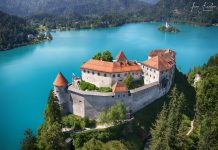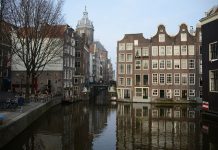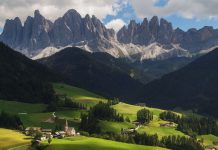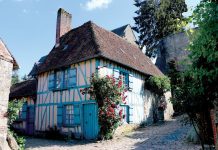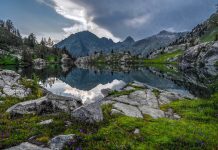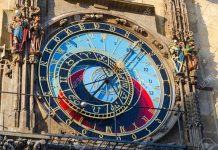If you think that Corsica Isula is only about splendid beaches and craggy mountainous walks, you are wrong.
As much as you might want to call it a coastal or mountainous destination, there are historical and archaeological wonders scattered around this French territorial island.
Bonifacio Citadel
Dating back to the 9th century, the Bonifacio Citadel on the sandstone promontory overlooks the marina on the azure Mediterranean Sea.
While walking past the sun-bleached houses you will fewel like traversing through a mini village or a living museum.From forging of knives to carving of woods, from local fabric stores to deep red coral jewelries the artisan colony speaks on behalf of Corsica’s rich trade history.
Explore the labyrinthine alleyways adorned with medieval designs and then visit the marine cemetery.
Citadelle De Calvi
On the limestone promontory Citadelle de Calvi is a massive fortification with 5 bastions, each offering panoramic views of the bay and the marina!
It was built during 1450 and since then has been assaulted by Anglo-Corsican and Franco-Turkish soldiers.
The marble engraving of “Civitas Calvi Semper Fidelis” on the porch is quite ironical as it states Calvi’s loyalty to Genoa. Inside its battlements you will see Cathedrale St Jean Baptiste from 13th century, residence of the then governor and the ebony relic of Christ des Miracles.
Filitosa, Sollacaro
Know about late Neolithic era and early Bronze Era during Roman arrival at Corsica from the megalithic structures at Filitosa.
While the pottery items and arrowheads are from earliest inhabitants during 3300 BCE, the 6 to 10 feet standing stones of Menhirs are from 1500 BCE. The Menhirs resemble weapons, armors and human faces.
Enjoy a trek through olive grove that leads you to rock overhang surrounded by a wall. Watch the hut platforms with central monument here and then visit the torri or Western Monument. The 5 megaliths surrounding 2000 years old Olive tree are also notable.
Citadelle, Saint Florent
The colossal white round stark fortress or Citadelle overlooking the Mediterranean Sea dates back to 1440 and it was built to safeguard rear area of Bastia and the agricultural land from turbulent sea.
Walk up to Genoese Citadel and sanctuary to visit the Saint Florent relics carried by Treviso people.
Contemporary and historical perspective meets on the wall arts which is open to public during summer.
Phare De La Pietra
Standing atop the square shaped white masonry tower, Phare de la Pietra was built during 1857 as a lighthouse with gallery and green lantern.
The lighthouse is still operational, and you can reach here from the mainland through the narrow isthmus.
Climb up the lighthouse to enjoy the sweeping view of Santa Reparata di Balagna, the port and Monticello by the sea.
Bastion De L’Etendard
Also called Bastion of the Standard, this 13th century fortress dominated the Bonifacio port entrance and protected the Genoa Gate.
After destruction in sixteenth century, the fortress was rebuilt with 7-10-meter-thick walls surrounding the Roman garden and memorial. As the highest point in the city, the view from above the cliffs is stunning.
You will also find exhibits of historical events like sinking La Semillante off the Lavezzi Islands, visits of Napolean Bonaparte and Charles V as well as the miniature “Lady of Bonifacio” and a Turkish soldier’s fossilized skeleton.
Torra d’Omigna
The ruins of Torra d’Omigna, a Genoese tower stand on a rocky cliff which can be reached by traversing the well-carved route through a rugged terrain surrounded by deep blue sea.
Dating back to 1605, this was a stronghold to hold back Barbary pirates from Corsica.
The coastal walk to this tower and its rooftop terrace is easy and offers spectacular views. Know more about planning a budget trip to Corsica.
Cargese Roman Catholic Church
The remnants of Greek and Roman colonial architecture are the highlights of the Roman Catholic Church although from its modest exterior with simple colors will seem plain.
But as you enter, the exquisite artworks will take you to the Grecian and Roman Era.
From vibrant frescoes to the artpieces dedicated to different saints and the hanging ornate chandeliers from high ceiling, there is grandeur in every corner.

